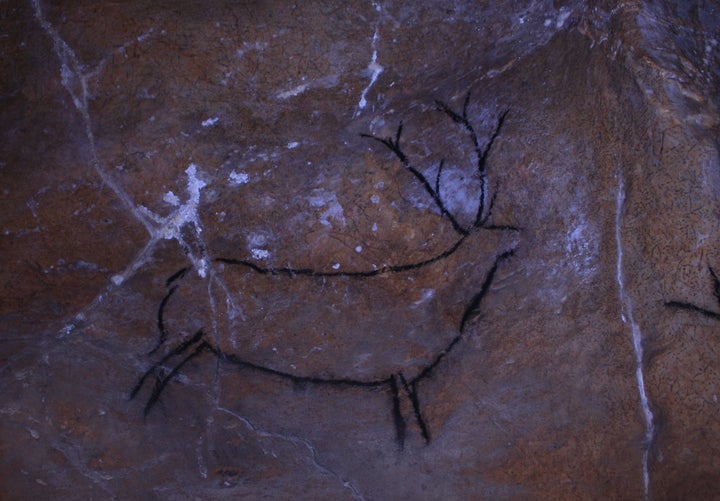Experts have argued that the sound within a cave influenced where our ancient ancestors drew or engraved their ‘art’. The suggestion is that where the acoustic is particularly resonant, reverberant or has a distinct echo, you are more likely to find decorations. This idea arose in the late 1980s, but it is only now that a rigorous scientific study to test this idea has been conducted. The results have just been published.

Stag in Las Chimeneas Cave, Spain
The research team included acoustician Bruno Fazenda of University of Salford, who measured 100s of locations at five caves which are part of the Cave of Altamira and Paleolithic Cave Art of Northern Spain. He applied knowledge from modern architectural acoustics, and measured a host of metrics that are known to relate to the perceived quality of speech and music in enclosed spaces. He compared these acoustic metrics for places with and without paintings.
There was a correlation between the acoustics and the position of the paintings, although in a blog Fazenda has described this as ‘weak.’ Still, given the problem of doing scientific experiments in a difficult environment on very ancient paintings, it is impressive that any correlation was found at all. The team found that the simple paintings of colored dots and lines are more likely to be near audible resonances. And paintings of any type are more likely to be found where the reverberation was middling.
The problem with a correlation study like this, is it cannot prove causation. Some would argue that the position of paintings was guided by the cave acoustics, but this new study cannot answer that question. At best it tells us that the hypothesis of acoustics influencing paintings has not been disproved by the results. As a further note of caution, consider a modern example where documents exist to resolve arguments. There are whispering galleries around the world where you can hear ghostly voices apparently emerging from within the walls - St Paul’s Cathedral in London and Grand Central in New York being two famous examples. With so many places built that have this acoustic effect, it is tempting to assume deliberate sonic design. But nearly all are accidents and a by-product of the geometry.
Because the acoustics of a cave are a function of the size, shape and the condition of the walls, then a correlation could arise between the sound and the painting location because of geometry. Causation would come from the geometry influencing both the location of the painting and the acoustic of the space. For instance, moderate reverberation arises in moderate sized spaces. Maybe our ancient ancestors followed the Goldilocks principle, preferring to paint where the cave was neither too big or too small? Before we can be sure the acoustics did influence the ‘art’, other possible explanations need rigorous testing.
